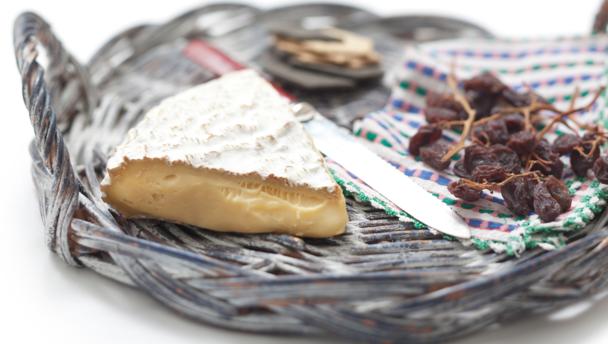

One of the world’s best-known soft cheeses, Brie originated in north-east France, but is now made all over the world, including in southern England. The large, flat wheels of cheese have a white, downy rind and a pale, mildly flavoured interior that is chalky when young, becoming increasingly runny as the cheese matures. Made from whole cows’ milk, which may be pasteurised or raw, Brie is rich and creamy and, as it melts well, is popular for use in cooking.
 Cheese and tomato chutney turnovers
Cheese and tomato chutney turnovers
Brie de Meaux is the original cheese from the city of the same name. Protected by an AOP (European Appellation d’Origin Protégée), it is matured for a month before sale. Other notable French Bries come from Melun, Montereau and Coulommiers – the first may be either very fresh and dusted with charcoal or extra-mature. British Brie is made in Cornwall or Somerset.
A slice of fully ripe Brie will be runny at room temperature, and the rind should be springy to the touch.
Brie is available all year, but Brie de Meaux, Melun and Montereau are considered to be at their best from May to October, and Brie de Coulommiers from October to April.
Unripe Brie should not be refrigerated, as this will disrupt the maturing process: instead, keep it in a cool place for a few days before consuming.
Article by Felicity Cloake
Type the ingredients you want to use, then click Go. For better results you can use quotation marks around phrases (e.g. "chicken breast"). Alternatively you can search by chef, programme, cuisine, diet, or dish (e.g. Lasagne).